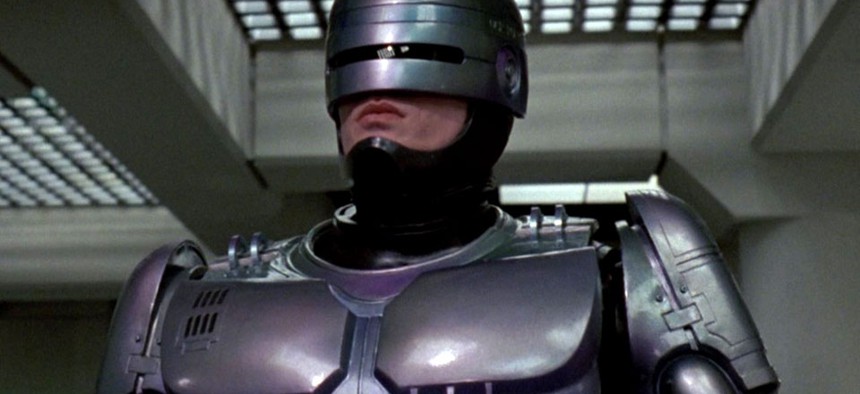Who Is to Blame for Detroit’s Bankruptcy—China? Or Robots?

In the 1987 film 'Robocop," Detroit was connected to a different kind of robot. Orion Pictures
While Detroit's financial troubles have many causes, some may affect the city more than others.
We know that, unlike most defeats, Detroit’s bankruptcy has a thousand fathers—everything from mismanaged pension funds to interest rate swaps gone the wrong way to years of racial animus that hollowed out the core of an already too-sprawling metropolis.
But the fundamental problem of late has been the city’s depleted population: More than a quarter of its residents leaving town between 2000 and 2010. That’s a function of bad city services and urban blight, but it’s also because it’s hard to make a living there. You can see that reflected in the chart above. Jobs in the Detroit metropolitan area, which held fairly steady through the nineties, plunged after 2000, as the unemployment rate rose. Between 2001 and the end of 2012, Detroit’s Wayne County lost more than 60,000 manufacturing jobs alone.
What changed in 2000? After all, Detroit had weathered other economic challenges. The auto factories that once defined Detroit have been moving out since the fifties, when big auto-makers sent them to the American sunbelt in the hopes of avoiding pesky unions, and as pressure from Japan’s auto industry began building in the 1980s.
Besides the popping of the tech bubble, it’s easy to point to trade normalization with China. GM (which sells more cars in China than in the US) and other automakers invested in factories in China, and many parts suppliers did the same.
NEXT STORY: Is Engagement Delayed Engagement Denied?






